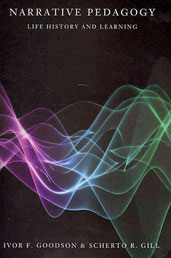Narrative Pedagogy
Learning and Narrative Pedagogy
However, each new stimulus will also encounter the existing narrative frame, so there is a process of reframing. Narrative learning includes some kind of negotiation, most often interior, conducted as an ‘internal conversation’ that a person has with him/herself, by which the ‘new’ is incorporated into the existing narrative frame. It may sound strange and intriguing to consider how a conversation can be had with oneself. In fact, the conversation is between the different ‘voices’ one has within oneself. A person acts upon different voices within him/herself and each of these voices holds a different authority over the individual. (See our dialogue on the community of voices in Chapter Four.) Some of these voices are ancestors, some belong to a particular profession or vocation, some speak in the voice of dominant social and political forces, some speak from the concern of, for instance, being a parent, a child, or a sibling; some come from a person’s own ego, and some may be represented by a higher vision or from spiritual sources. These voices debate inside the person and command his/her narrative in accordance with the interlocutors, the spaces from which he/she speaks, and for what purposes. So, reframing starts from an internal negotiation with these different voices and results in a person’s decision in terms of what constitutes his/her commanding voice at the time. This internal conversation can then lead to a shift of voice in the life story.
The shift of voices in oral work such as literature and life stories has been examined from the notion of refraction, which refers to the turning or bending of any wave, such as a light or sound wave, when it passes from one medium into another of a different density. This long quote from Allen (2002) gives a good explanation of how refraction works in narrative:
Sight mediates and metonymically represents the aesthetic refraction of reality in verbal as well as visual arts. The eye performs a literal act of translation. For the body, the eye is both an opening and an organ. The lungs and stomach process what mouth and nose inhale; the eye performs a more complex operation: it filters the world both into the body and into consciousness. Light, color, and form are interpreted rather than digested, refracted through memory. Although both trained and biologically programmed, the eye is more subjective, more selective, than the internal organs. On the threshold between the self and the world, the eye blinks, redirects and refocuses its gaze. Whereas the ear, that other liminal organ, filters sound that it cannot generate, the eye that sees is also the object of perception. In its fictional representations, the eye figures for “I”, for the subject’s ways of knowing the world. It functions as opaque reflector, transparent frame, transforming prism, passive receptor, active projector, or lens magnifying consciousness (p. 2).
